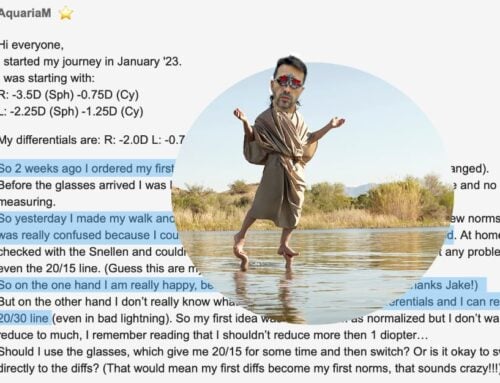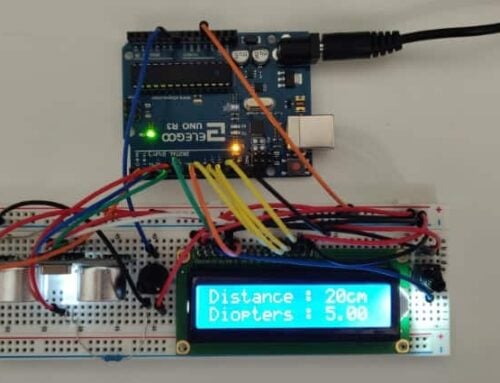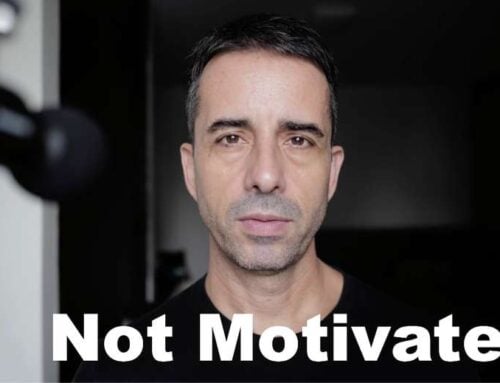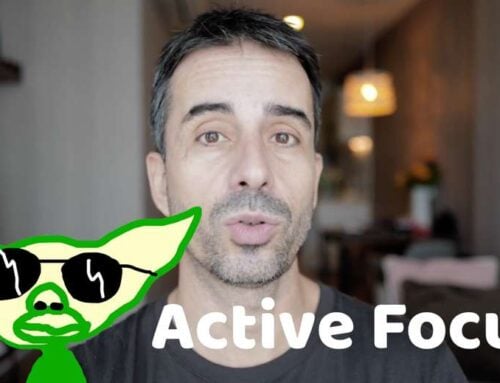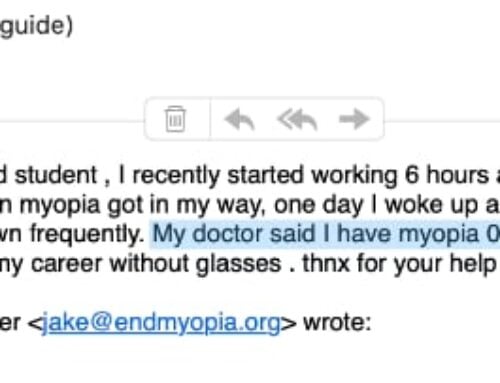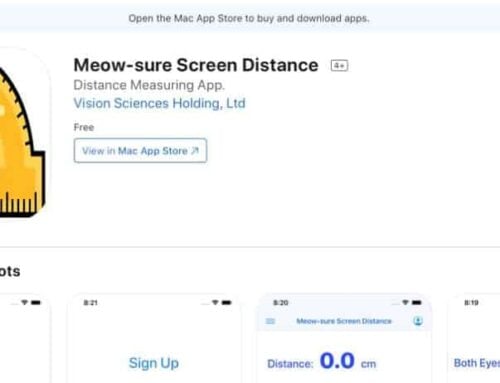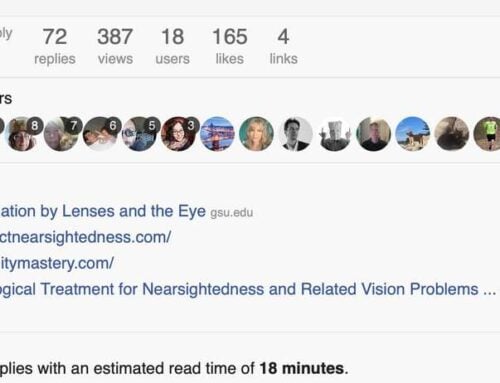Of course it sounds like extra work, keeping a log, especially a proper one which includes:
Factoring in centimeter results for various conditions, including before and after close-up time, that is quite a bit of data to keep track of.
On the upside, most of the measuring you do in the first and second month. Once you have a solid grasp of the correlation of lighting, close-up strain, prescription strength and your individual physiology, occasional measurements suffice completely.
There are two big contributing reasons that you want to keep a log:
1. It tells you a lot about your physiology.
Everybody is different. Where one person might respond strongly, another will not. If you know what most affects your eyes, both positively and negatively, you can adjust the recommendations of the Vision Improvement Courses to apply to you in a more tailored fashion. You might want an extra hour a week of outdoor time, or less close-up, or maybe more aggressively lowered differential prescriptions.
Unless you are in the one-on-one program, this is something you have to figure out on your own. And measuring various conditions will tell you exactly where you need to focus.
2. It will keep you motivated.
You may not improve centimeter measurements for a month, or two, or three. Instead, your Snellen results might improve. Keeping a log of all measurements will take out the subjective perspective, and tell you where you are improving.
Especially if you are looking for a lot of change, several diopters, vision improvement takes time. When you spend months with habits that take little effort, it becomes hard sometimes to really gauge what is happening in terms of your eyesight getting better. On many occasions, I had frustrated clients, who thought that nothing was happening – until we compared measurement results from previous months. And frustration really is a risk, if you have no tools to give you confidence that you are on the right rack – without those, it can occasionally be tempting to just quit.
As long as you create positive stimulus, and keep strain low, improvement happens – spending just five minutes once a month to record Snellen and centimeter will be a worthwhile investment, when you most need it.
Here is a good account, from the forum, of a detailed measurement result:
First of all, I noticed that natural sunlight illuminating the Snellen first thing in the morning was definitely the most optimal setup of all. The later in the day it got, the more fatigue set in, and the worse lighting got (including artifical/dimmer indoor lighting), the worse Snellen results got.
Though I experimented with natural outdoor lighting, the following 3 days represent the same garage/semi well-lit environment for consistency wearing my normal prescription glasses of -4.00, -0.50, 180 (both eyes):
Day 1:
#1 Morning From 20ft, Left eye sees 20/15, right eye sees 20/15, both see 20/15 better together. Max distance: 26ft both eyes can see 20/15. *Note* Outdoors I could see up to 28ft, almost 30ft 20/15 both eyes.
#2 Hour later. All the same at 20ft, but max distance was only 24ft 20/15.
#3 Late afternoon. All the same at 20ft, but max distance was only 23ft 20/15.
#4 Before bed. All the same at 20ft, but max distance was only 22ft 20/15.Day 2:
#1 Same as Day 1 except max was only 25ft perhaps because of way sunlight was hitting slightly later than previous morning.
#2 20/15 from 20ft both eyes very clear, up to 23ft (slightly worse after computer work, some morning phone calls/etc.)
#3 All same at 20ft and still around 23ft max. Did some outdoor exercise which seemed to help.
#4 22ft max 20/15.Day 3:
#1 Max 26ft 20/15. All else same.
#2 Max 24ft 20/15. All else same.
#3 Max 22ft 20/15. All else same.
#4 (Much later) Max 21ft 20/15. All else same.In summary, the more relaxed, in the morning, with better natural well-lit sunlight conditions were optimal. Any sort of eye strain/close up work/stress, and fatigue, and indoor artificial light all made it worse.
Obviously I am spending more time outdoors now and feeling happier! Can’t wait to receive my close-up glasses and start lowering the normal prescription I have!
TL;DR: Natural sunlight and morning are best for Snellen results.
The full post can be found here.
Notice how many helpful conclusions can be drawn from this rather simple practice of looking at an eye chart, in various circumstances.
Rather than just wearing a fully compensating eyeglass prescription and ignoring the realities of varying circumstances, this creates the necessary sensitivity to understand what your eyes need – and when.
If you haven’t started yet, it’s never too late. Get yourself a log! And for a quick counterpoint, for individuals who strongly prefer a no-log avenue, read this article.
And if that’s too boring for you, and you want a real trophy of your accomplishment, read Michael’s story.


